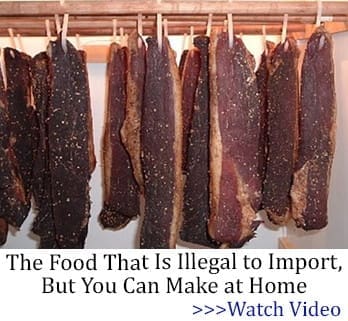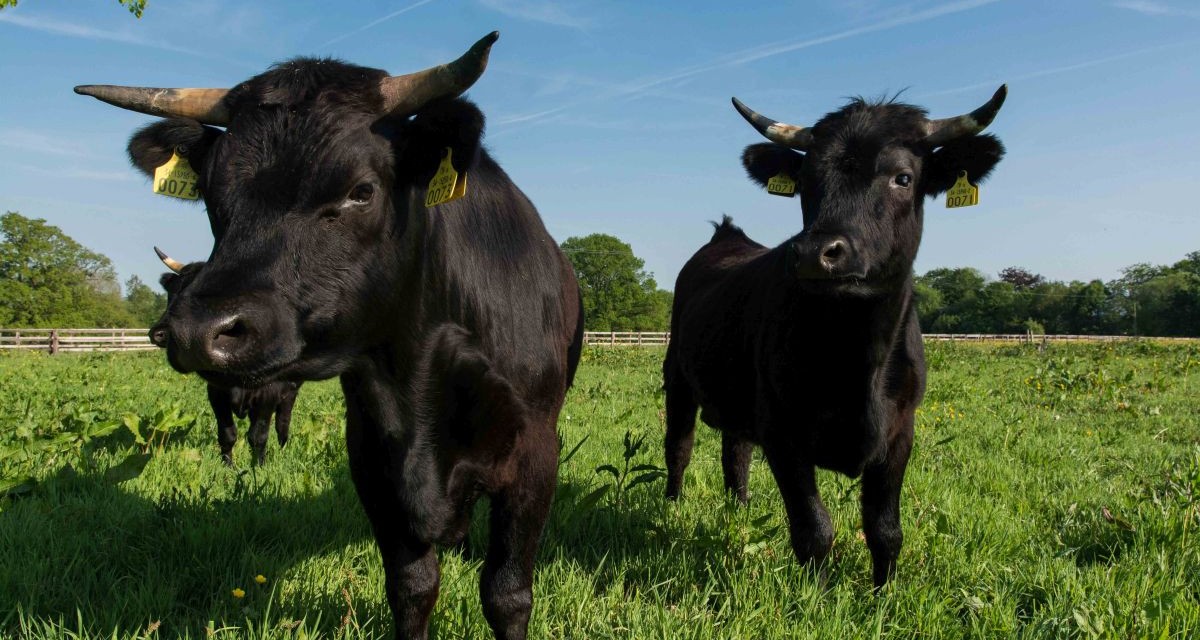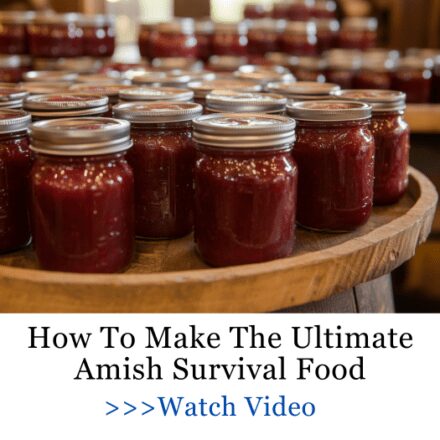If you’ve been looking for a way to add cattle to your homestead without needing hundreds of acres or a feed bill that drains your savings, you might want to meet the Dexter cow. This Irish breed has been quietly winning over homesteaders and small farmers for its versatility, thriftiness, and manageable size.
Dexters aren’t just “mini cows.” They’re a triple-purpose breed—producing milk, meat, and even serving as draft animals. For anyone serious about self-sufficiency, few animals pull their weight the way a Dexter can. And because they are hardy and low-maintenance, they’re one of the most practical investments for families who want to step away from industrial agriculture and toward personal food security.
What Makes Dexter Cows Different
Dexter cattle originated in Ireland, where small farmers needed hardy, compact animals that could thrive on rough pasture and limited resources. Brought to America in the early 1900s, they’ve held onto their reputation as the perfect “homestead cow.”
- Size: Standing just 36–44 inches tall at the shoulder, Dexters weigh 600–1,000 pounds—about half the size of most beef cattle. This makes them easier to handle, transport, and butcher on a small scale.
- Temperament: Known for being docile and friendly, they’re often described as the “family cow.” Many homesteaders find them safer to keep around children than larger breeds.
- Hardiness: Dexters thrive on grass, need less feed than standard cows, and can adapt to a wide range of climates.
Their small stature doesn’t mean they’re fragile—Dexters are rugged survivors, built for efficiency. Unlike many modern breeds that require constant grain supplementation, Dexters can maintain good health on pasture alone, making them especially valuable for low-input farming.
Another unique trait is their adaptability to different climates. From cold northern winters to humid southern summers, Dexters tend to maintain condition where other cattle might struggle. This resiliency makes them a safe bet for homesteaders who want livestock that can endure unpredictable weather patterns.
Dexter Cows for Milk
One of the biggest reasons homesteaders choose Dexters is their milk. A Dexter cow can produce between 1–3 gallons of milk per day—just enough to supply a family without leaving you overwhelmed by surplus.
Their milk is rich, often with 4% butterfat or higher, making it perfect for butter, cream, and cheese. You won’t be drowning in milk like you might with a Holstein, but you’ll get a steady supply of high-quality dairy.
Related: How To Wax Cheese For Long Term Storage
And here’s the bonus: because of their smaller size, Dexters are easier on fences, easier to milk by hand, and often healthier than high-production dairy breeds that burn themselves out. A Dexter can produce consistent milk for years without the heavy health issues that plague high-yield dairy cows.
For homesteaders who value versatility, this is a major plus. With one Dexter cow, you can provide fresh milk, homemade yogurt, rich cream, and butter—all without the stress of managing more milk than your family can realistically use. If you decide to breed her, you’ll also gain a steady cycle of calves, which can either be raised for beef or sold to other homesteaders looking for this unique breed.
Dexter Cows for Meat
Don’t let their small size fool you—Dexters are excellent beef cattle. Their meat is lean, tender, and well-marbled. A steer will typically dress out at 400–500 pounds of beef, which is more manageable for families than the massive yield of a standard beef cow.
For a homesteader, this means you can raise and butcher your own beef without worrying about massive storage space or feeding an animal that eats you out of house and home. Many families process Dexters themselves, keeping the cycle fully self-sufficient.
Dexter beef is often compared to high-quality grass-fed beef—it has excellent flavor and texture, especially when the animals are raised on pasture. Because of their smaller size, the carcass is easier to handle, and processing is far less intimidating than breaking down a 1,500-pound steer. This opens the door for more families to take control of their own meat supply, rather than relying on outside butchers or processors.
Another advantage is efficiency. With Dexter cattle, you can stagger butchering to match your family’s freezer space and needs, instead of being overwhelmed with hundreds of pounds of meat at once. This makes the breed especially appealing for small-scale households that want steady food security without unnecessary waste.
Dexter Cows as Draft Animals
Historically, Dexters weren’t just kept for milk and meat—they also pulled their share of farm work. While not as strong as oxen or larger breeds, they can be trained to pull carts, small plows, and wagons.
On a homestead where you’re trying to cut back on fuel costs and dependence on machinery, a Dexter can serve as a living tractor for light work. That’s a level of versatility you won’t find in most modern cattle.
Training a Dexter as a draft animal requires patience, but the payoff can be substantial. Families in the past relied on them for hauling firewood, moving farm goods, and even plowing garden plots. In an era of rising fuel prices and potential supply chain disruptions, having livestock that can step into that role is a practical hedge against dependence on external systems.
While they won’t replace a tractor for large acreage, their ability to serve multiple roles—milk, meat, and draft—makes them one of the most efficient breeds you can add to a small farm. Few animals embody the “do-it-all” spirit of self-sufficiency as well as the Dexter cow.
Why Dexter Cows Are Ideal for Small Homesteads
The true beauty of Dexters is their efficiency. They can thrive on pasture that wouldn’t support larger cattle, and they require far less feed through the winter. A few acres is often enough to keep a Dexter happy, making them one of the few breeds truly suited for small-scale self-reliance.
Other reasons homesteaders love them:
- Easier to fence in—less likely to challenge barriers.
- Calve easily, with few complications.
- Long lifespan, often productive into their teens.
- Dual (or triple) purpose, giving you flexibility as your needs change.
A smaller cow also means smaller infrastructure needs. Shelters can be simpler, fencing can be lighter, and handling facilities don’t need to be as heavy-duty as those designed for larger breeds. This translates into lower upfront costs and less strain on the homestead budget.
Dexters also fit perfectly into rotational grazing systems. Because they’re smaller, they exert less pressure on pastures, making it easier to maintain healthy grasslands over time. For anyone interested in regenerative farming or permaculture, Dexters naturally complement sustainable land management practices.
Dexter Cows vs. Other Common Breeds
| Feature | Dexter Cows | Holstein | Angus | Jersey |
| Size | Small (600–1,000 lbs) | Very Large (1,400–1,800 lbs) | Large (1,200–1,600 lbs) | Medium (800–1,200 lbs) |
| Milk Production | 1–3 gal/day, high butterfat | 6–10 gal/day, low butterfat | Not a dairy breed | 4–6 gal/day, high butterfat |
| Meat Quality | Tender, well-marbled, manageable yield | Low-quality beef (not raised for meat) | High-quality beef, large yield | Lean, flavorful but small yield |
| Feed Needs | Minimal, thrives on pasture | Very high—grain dependent | High | Moderate |
| Calving | Easy, low intervention | Can be difficult | Generally good | Easy |
| Temperament | Docile, family-friendly | Nervous, high-strung | Generally calm | Friendly but can be stubborn |
| Lifespan/Usefulness | 15–20 years, long productivity | 6–8 years, burnout from milk production | 10–12 years | 10–15 years |
| Best Suited For | Small homesteads, self-sufficiency | Commercial dairy farms | Commercial beef operations | Dairy-focused homesteads |
This chart highlights why Dexters are such an ideal fit for self-sufficient families: they balance productivity with efficiency, without overwhelming space or budgets.
Cost & Space Needed for Dexter Cows
One of the reasons Dexters fit so well into small-scale self-sufficiency is their relatively low cost of ownership compared to larger breeds. But like any livestock, there are still upfront and ongoing expenses to consider.
Purchase Price
- Dexter Calves: $800–$1,500 depending on quality and whether they’re registered.
- Breeding Cows: $1,200–$2,500 for proven animals.
- Bulls: $2,000+ (though many small homesteaders use artificial insemination or lease a bull to avoid keeping one full-time).
Compared to commercial dairy or beef breeds, this price is higher per pound of animal—but you’re paying for efficiency, hardiness, and manageability.
Space Requirements
Dexters need less land than standard cattle. A good rule of thumb:
- 1–2 acres per Dexter on quality pasture.
- With rotational grazing, you can maximize grass use and often reduce the acreage needed per animal.
- In marginal pasture conditions, more acreage is required.
This makes them one of the few cattle breeds that realistically fit into smaller homestead setups without overgrazing.
Feed & Winter Costs
- Pasture Season: Most Dexters can thrive on grass alone when forage is abundant.
- Hay Needs: Expect to feed roughly 15–20 lbs of hay per day per cow during the winter. For a 5-month feeding season, that’s about 1.5–2 tons per cow.
- Grain: Optional, though some owners provide a small amount for conditioning or during lactation.
Because of their size, Dexter cows typically eat 30–40% less feed than standard beef or dairy cattle, which translates to major cost savings over time.
Infrastructure
- Shelter: A three-sided run-in shed is usually sufficient. Smaller size means less square footage needed compared to large cattle barns.
- Fencing: Standard cattle fencing works, but because Dexters are less aggressive, many homesteaders get by with lighter setups like woven wire or well-maintained electric.
👉 Bottom line: A Dexter cow requires a fraction of the land, feed, and infrastructure that bigger breeds demand. While the upfront purchase price may seem steep, they quickly pay for themselves in efficiency, manageable outputs, and longevity.
Things to Keep in Mind
Of course, no breed is perfect. Dexters are slower growing than commercial beef cattle, so you’ll need patience if you’re raising them for meat. Their smaller size also means less yield per animal compared to big breeds, though for most homesteads that’s a feature, not a flaw.
They’re also in demand, which can make them pricier to buy initially. But many owners find they pay for themselves over time through reduced feed costs and manageable outputs.
Another consideration is availability. Depending on your region, finding registered Dexter breeders can take effort, and you may need to travel to source good-quality stock. Because they’re so sought after by self-sufficient families, calves often sell quickly and may command higher prices than more common breeds.
Lastly, while their small size makes them easier to handle, they are still cattle. Proper fencing, regular veterinary care, and safe handling practices are all necessary. Don’t underestimate them just because they’re shorter—you’ll need to treat them with the same respect as any livestock.
Final Thoughts
Dexter cows embody the spirit of self-sufficiency: small, hardy, multipurpose, and efficient. They won’t overwhelm you with gallons of milk you can’t store, nor will they demand vast pastures or endless hay bales. Instead, they quietly provide exactly what a family homestead needs—healthy milk, quality beef, and even a bit of muscle for the field.
For anyone serious about cutting costs, producing more of their own food, and relying less on outside systems, Dexter cattle are more than just livestock. They’re a partner in building the sustainable, self-sufficient life you’ve been working toward.
You may also like:
 How Long Are Cows Pregnant? A Complete Guide for Farmers and Animal Owners
How Long Are Cows Pregnant? A Complete Guide for Farmers and Animal Owners
Do You Know Why You Should Never Put A Tall Fence Around Your House? (Video)
How To Raise Mini Cows For Prepping And SHTF













